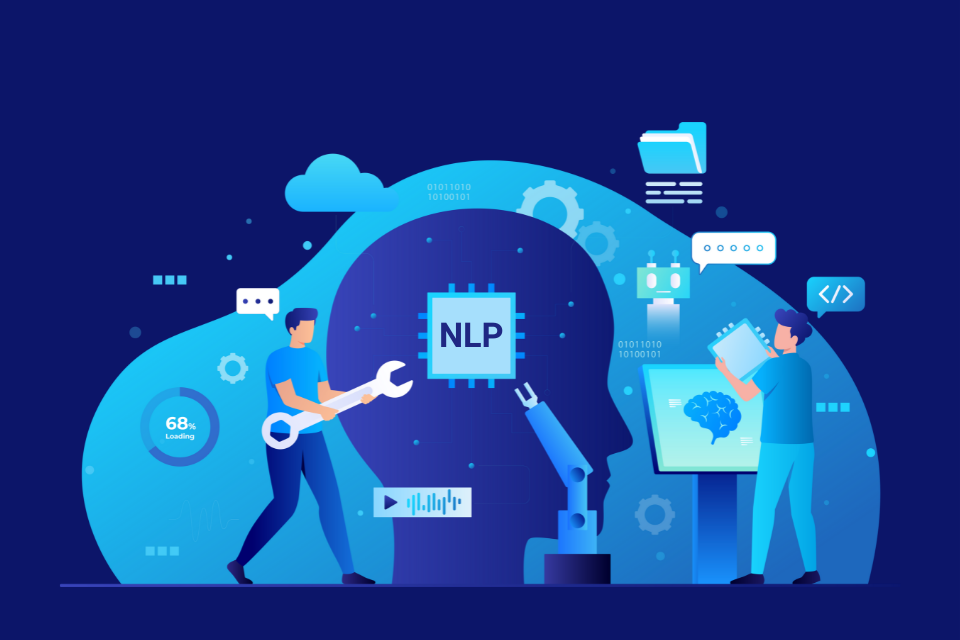In the realm of effective communication, Neuro-Linguistic Programming (NLP) stands out as a powerful tool to master the art of speaking. NLP, a psychological approach to communication and personal development, provides a unique framework for understanding and influencing human behavior. In this comprehensive guide, we will delve into the depths of NLP speaker mastery, exploring techniques, tips, and the psychological underpinnings that can elevate your communication skills to new heights.
Understanding NLP: The Foundation of Effective Communication
Neuro-Linguistic Programming, often referred to as NLP, is a methodology that explores the relationships between neurological processes, language, and behavioral patterns acquired through experience. Developed in the 1970s by Richard Bandler and John Grinder, NLP has since evolved into a versatile tool for personal development and communication enhancement.
At its core, NLP recognizes the profound connection between language and the human mind. By understanding how individuals structure their thoughts and interpret language, speakers can gain insight into effective ways to communicate and influence others positively.
The Pillars of NLP Speaker Mastery
1. Rapport Building: The Foundation of Effective Communication
Building rapport is a fundamental aspect of NLP speaker mastery. Establishing a strong connection with your audience or conversation partner lays the groundwork for meaningful communication. Techniques such as mirroring and matching, where you subtly mimic the other person’s body language and speech patterns, create a sense of familiarity and trust.
2. Precision in Language: Crafting Impactful Messages
NLP emphasizes the importance of precise language to convey messages effectively. Words have the power to shape perceptions and influence emotions. Masterful NLP speakers choose their words carefully, using language that resonates with their audience and elicits the desired response.
3. Anchoring: Creating Powerful Associations
Anchoring is a technique in NLP that involves associating a specific emotion or state with a particular stimulus, such as a word, gesture, or touch. Skilled speakers use anchoring to evoke positive emotions, enhance engagement, and create memorable experiences for their audience.
4. Calibration: Tuning into Non-Verbal Cues
The ability to read and interpret non-verbal cues is a hallmark of NLP speaker mastery. Calibration involves paying close attention to facial expressions, body language, and tonal variations. By tuning into these cues, speakers can adjust their approach in real-time, ensuring effective communication.
Practical Tips for NLP Speaker Mastery
1. Mirror and Match: Establishing Connection
Practice mirroring and matching techniques to build rapport with your audience. Pay attention to their body language, pace, and tone, and subtly align your behavior to create a sense of connection.
2. Use Presuppositions: Shaping Perspectives
Employ presuppositions, a key linguistic tool in NLP, to guide the listener’s thought process. By embedding assumptions within your statements, you can shape perceptions and subtly influence the way information is received.
3. Storytelling with Metaphors: Tapping into the Unconscious Mind
Harness the power of metaphors and storytelling to convey complex ideas. Metaphors speak to the unconscious mind, making it easier for your audience to connect with and understand the message on a deeper level.
4. Practice Active Listening: Enhancing Understanding
Masterful communication involves not only effective speaking but also active listening. Cultivate the skill of listening attentively, responding thoughtfully, and adapting your communication style based on the cues you pick up from others.
The Psychology Behind NLP Speaker Mastery
1. Neurology: Understanding the Mind-Body Connection
NLP recognizes the intricate link between neurology and communication. By understanding how the brain processes information, speakers can tailor their messages to align with the cognitive patterns of their audience, enhancing comprehension and retention.
2. Linguistics: The Language of Influence
Linguistics in NLP is not just about words; it’s about understanding the structure and patterns of language. Mastering linguistic techniques allows speakers to craft messages that resonate deeply, fostering a profound impact on the listener.
3. Programming: Shaping Behavioral Patterns
The programming aspect of NLP involves exploring the learned behaviors and patterns that influence human actions. NLP speakers leverage this knowledge to inspire positive change, whether in a one-on-one conversation or addressing a larger audience.
NLP Speaker Mastery in Real Life: Success Stories
Numerous public figures and business leaders attribute their success to mastering NLP speaker techniques. From charismatic political leaders to influential entrepreneurs, the application of NLP principles has left an indelible mark on the world of public speaking.
Journey to NLP Speaker Mastery: Learning and Practice
Becoming a masterful NLP speaker is a journey that requires dedication, practice, and continuous learning. Attend workshops, read books by NLP experts, and seek feedback to refine your skills. Embrace the mindset of a lifelong learner, and watch as your ability to communicate with impact transforms over time.
Conclusion
In the dynamic landscape of communication, NLP speaker mastery offers a roadmap to unlock your full potential. By understanding the psychology behind NLP, incorporating practical techniques, and embracing continuous learning, you can elevate your communication skills and leave a lasting impact on those you interact with. Embark on the journey to NLP speaker mastery, and watch as the art of effective communication becomes second nature.





